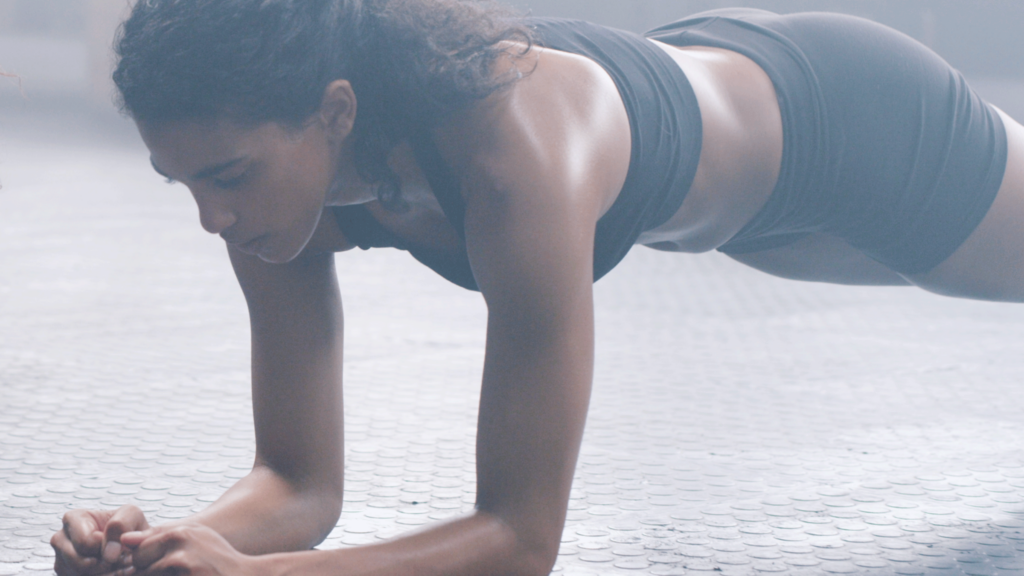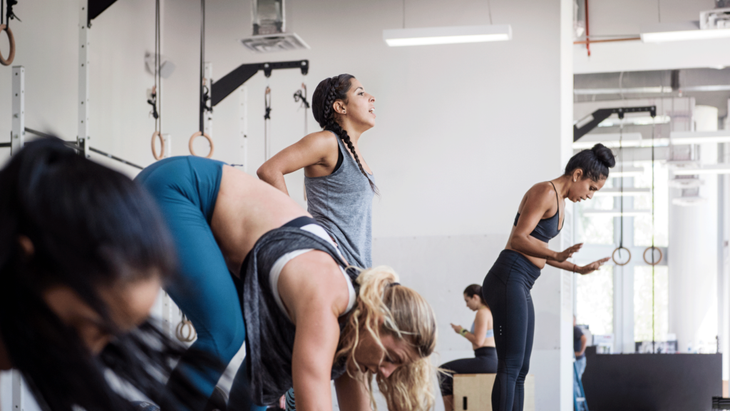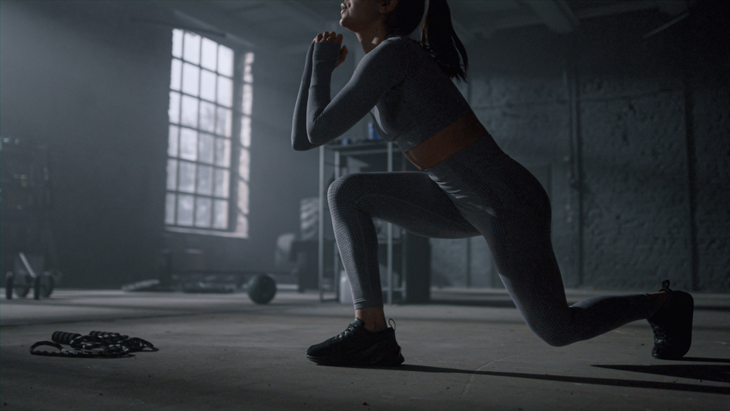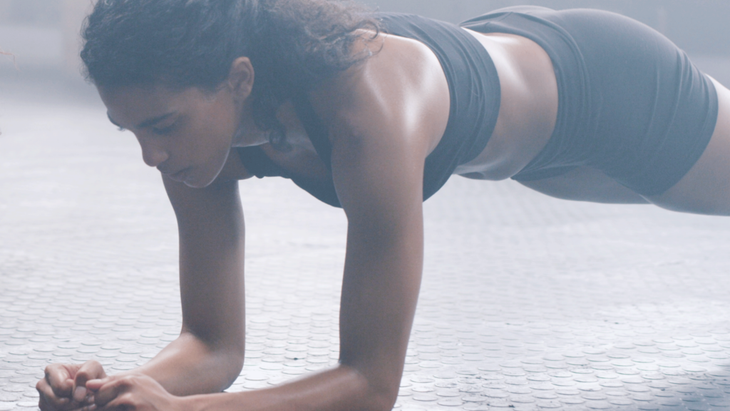
“], “filter”: { “nextExceptions”: “img, blockquote, div”, “nextContainsExceptions”: “img, blockquote, a.btn, a.o-button”} }”>
Heading out the door? Read this article on the new Outside+ app available now on iOS devices for members!
>”,”name”:”in-content-cta”,”type”:”link”}}”>Download the app.
Starting to lose your mind a little while being stuck indoors? You’ll experience a much-needed release of that pent-up frustration in the following 10-minute workout at home. It’s an explosive interval training workout based on “every minute on the minute” (EMOM), in which you repeat a specific movement for a set amount of time or number of reps and then you rest for whatever seconds remain in that minute. Then you switch to a different movement at the onset of a new minute.
Although in an attempt to race through as many reps as possible or be done as quickly as possible, it can be easy to fall into some sloppy and unsafe alignment. That’s where yoga factors into the workout. Not just in the resemblance of the shapes to common poses but in your self-awareness so you can keep proper form and strengthen the intended muscles rather than straining or potentially injuring yourself.
Sound easy? It’s not. And that’s the point.
A 10-Minute Workout at Home (That’s Based on Yoga)
Do some warm-ups and then set your stopwatch. Every minute on the minute, do 30-45 seconds of each specified exercise and spend the remaining 30-15 seconds at rest. For example, during the first minute, you could do 30 seconds of burpees followed by 30 seconds of rest or 45 seconds of burpees followed by 15 seconds of rest. The instructions offer options for doing these as either high impact or low impact.
Minute 1: Bodyweight Squats
Minute 2: Burpees
Minute 3: Russian Twists
Minute 4: Switch Lunges
Minute 5: Plank
Minutes 6-10: Cycle through the above exercises again
1. Bodyweight Squats
How to: Stand with your feet shoulder-width apart, toes turned out slightly, arms at your sides. Bend your knees and bring your hips back into a squat, preferably with your thighs parallel to the mat, as you sink your weight into your heels. Then stand back up and squeeze your glutes or jump in the air before landing in a squat. That’s one rep.
Common misalignments:
• Letting your knees collapse inward and toward one another
• Leaning your weight into your toes rather than dropping your weight into your heels
• Not keeping your back straight

2. Burpees
How to: Stand with your feet together, arms at your sides. As you exhale, crouch down, place your hands on the mat, jump or walk your feet behind you in Plank Pose, and bend your elbows and lower in a push-up to Chaturanga or all the way to the mat. As you inhale, straighten your arms, jump or step your feet back underneath you, and stand or jump into the air as you reach your hands overhead. That’s one rep.
Common misalignments:
• Splaying your elbows out to the sides
• Dropping your body to the mat rather than slowly lowering yourself as you use your strength to resist gravity
• Holding your breath throughout the exercise

3. Russian Twists
How to: Sit on the floor with your knees bent and your feet hip-distance apart. Reach your arms straight ahead and clasp your hands in front of you. Engage your core as you lean back approximately 45 degrees. You can lift your feet off the mat in a modified Boat Pose. Keep your knees and front hip points steady and facing forward as you twist your chest toward one side and then the other, rotating through your trunk. That’s one rep.
Common misalignments:
• Collapsing in your lower back and slouching in your upper body. Keep your back straight and lift your sternum toward the ceiling, even if that means keeping your feet on the mat
• Rushing it. Take your time so you’re able to find a safe range of movement for your body. Twist only your chest and shoulders, not your lower back.
• Adding too much weight. These twists are often done while holding dumbbells, a stability ball, or a weight plate, but that’s not necessary. Let yourself acclimate to the exercise without weights and focus on feeling the movement in your side body.

4. Switch Lunges
How to: Stand with your feet hip-distance apart in a High Lunge stance. Bend both knees and lower your hips and back knee toward the mat and then switch your legs by either stepping your opposite foot forward or jumping and switching your feet mid-air and landing with your opposite foot forward in a lunge. That’s one rep.
Common misalignments:
• Rushing. This causes you to throw your body into the basic shape but without being aware of the desired and safe muscular engagement.
• Slouching in your upper back or leaning too far forward or backward. Keep your back upright.
• Letting your front knee collapse inward or fall outward. (Contrary to popular misinformation, you can lean your front knee in front of your toes.)

5. Plank or Forearm Plank
How to: Find Plank Pose. Opt for your hands directly underneath your shoulders and your head, hips and heels in line or place your forearms on the mat parallel to one another. Stay here and breathe.
Common misalignments:
• Letting your lower back sag. Remedy this by reaching through your heels.
• Dumping in your shoulders. The correction is to press your palms or forearms into the mat and lengthen through your upper body.
• Straining your neck. Keep your gaze down and ever so slightly forward to keep the natural curve of your neck.
Repeat the cycle once for your 10-minute workout at home. Cool down with some simple stretching.
Originally published in Oxygen Magazine. This article has been updated.





